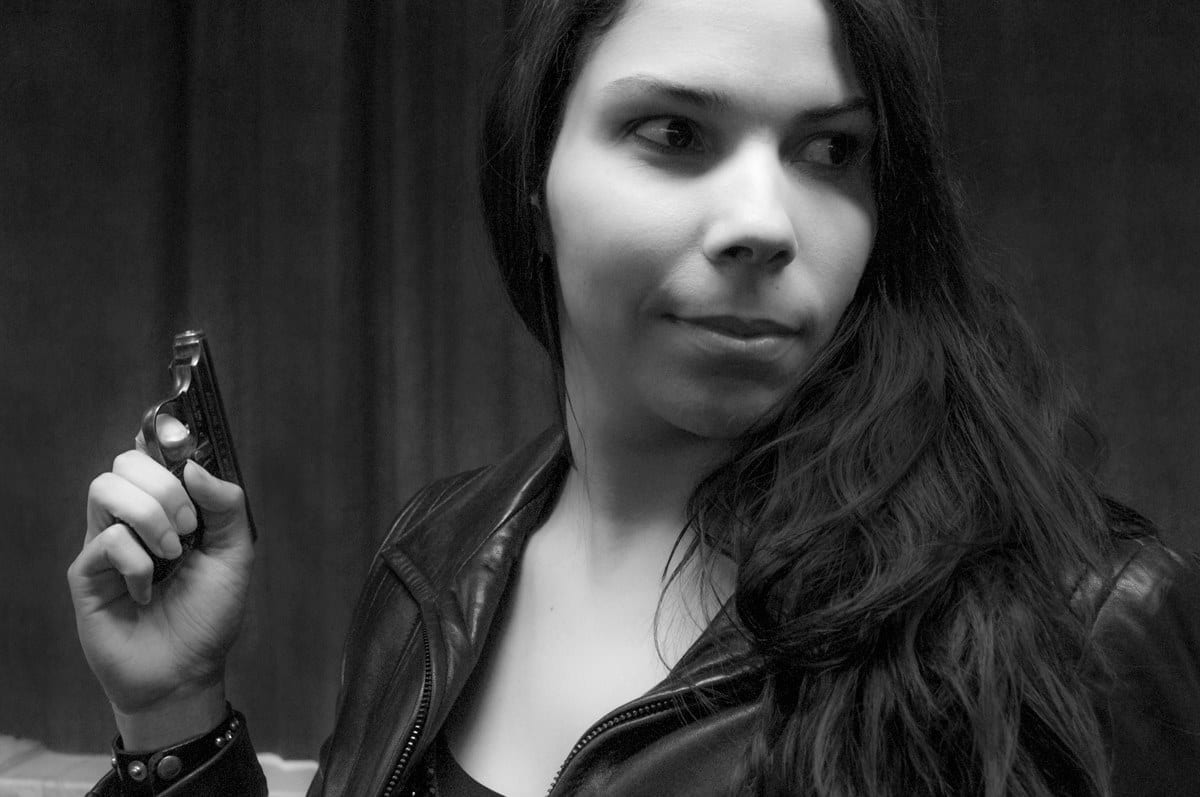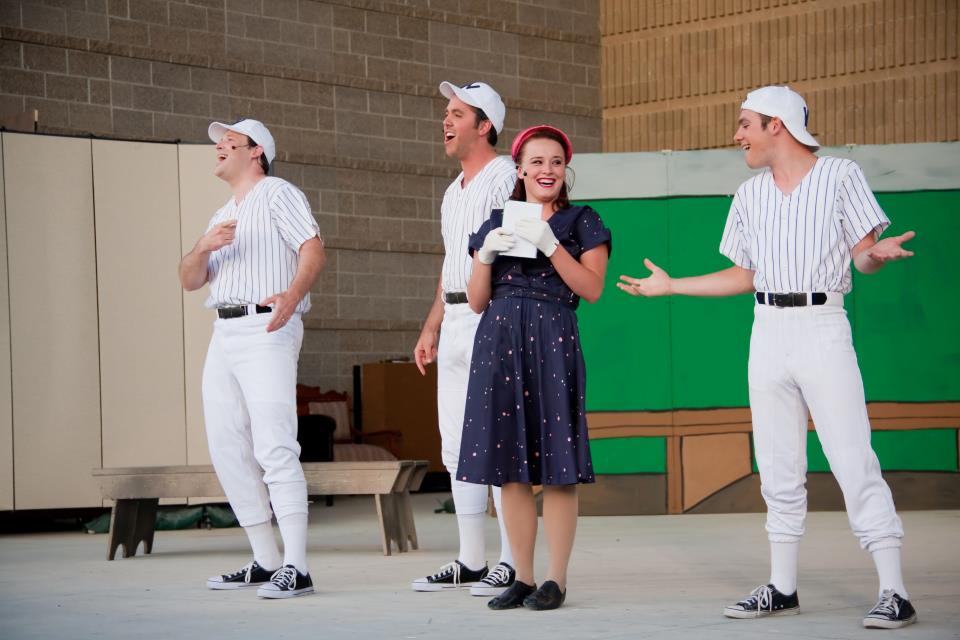SALT LAKE CITY — Sunset Baby is strong. The writing is powerful and deeply beautiful. The acting is solid and surprising. The space is evocative; the soundtrack is revolutionary. This review only touches the surface; you should go and see this important work.
Sunset Baby is stacked full of political and social concerns. Dominique Morisseau craftily delves into these issues from beginning to end through the story of Nina (played by Michaela Johansen) who we meet at a pivotal moment in her life. Just like the wig that she puts on and off throughout the play, Nina is trying on different roles, sometimes through choice, and sometimes for survival, all in the hopes that she will come to a place of peace, in her surroundings, and within herself.
After an opening monologue from Nina’s father, Kenyatta Shakur (playing William Ferrer), the audience sees Nina getting ready. The stark image of Nina’s wig, sitting on a mannequin head, shows her displacement in the world—a world where she is displaced from her personal past, her parents, and the environment that she is trying to survive in. Nina puts on her makeup, her shoes, and finally her wig, all while listening to Nina Simone’s “Feeling Good.” And then her father shows up at her door. Kenyatta has recently been released from a long-term prison sentence, a sentence caused by his revolutionary aggravations.
This first reunion between Nina and Kenyatta outline some of the contentions and dichotomies in the content of the play. Even though Kenyatta named Nina, a name imbued with meaning and significance—named after the signer Nina Simone—it’s a name that Kenyatta hasn’t earned the right to use in a casual or paternal way. While Kenyatta was out fighting for the cause, and serving time, he missed out on the time involved in raising a child, and Nina considers this abandonment and neglect unforgiveable. In fighting for something, Kenyatta maybe loses what it is that he was fighting for. And the world that he so desperately wants to give to Nina turns out to be just another problem, another fight.
A main part of the play revolves around the underpinnings of this fight, the violence that is inherent in the system and cannot be escaped. This violence is most viscerally felt in the acting of Calbert Beck, who plays Damon, Nina’s boyfriend. Damon’s dialogue is more aggressive, retelling how he has beaten men and used guns in his line of work. Not only does Beck deliver his dialogue in volatile depth, he embodies this threat assuredly. Beck owns the space of the stage and acts his part with a heavy, threatening power. One of the more palpable moments happened as Beck literally and physically tries to take control of Johansen, and all the space that her character occupies on stage, in that moment.

Calbert Beck (Damon) on the left and Michaela Johansen (Nina) on the right! Photo Credit: John Guertler
The space created for this production is alive with color, and yet the colors on the set become soaked with a sense of sadness. A sadness at the loss of what could have been, at the memory of the sunset, and the memory forgotten. The set design, by Dan Christensen, and the lighting design, by Glenn Linder, work together to make a picture of the sunset, with orange and purple tones and hues, to offset the anger and heaviness of the action. Director Richard Scharine manages the show with an almost musical quality, slowing down and then speeding up the pacing of the action.
The songs of Nina Simone are used by Scharine to give texture to the performance, and Johansen lets the music flow through and change her. I particularly enjoyed the slower paced moments where Johansen takes the time to move through her space, and alter herself to whatever she needs her place and person to be.
Johansen gives a place and understanding to the objects that are hers in her space, particularly the way she lovingly holds the pictures and letters of her mother. It is interesting that the major objective of all of the characters is to gain possession of the letters left by Nina’s mother, whether for monetary gain, sentimentality, or information. Regardless, the weight symbolic in these letters is heavy. For Nina, they represent her mother, the only person who will ever know her, truly, and they also represent the voice that has been lost or silenced throughout history, and its wars and revolutions. The figure of the mother.

Michaela Johansen (Nina) on the left and William Ferrer (Kenyatta Shakur) on the right. Photo Credit: John Guertler
For Kenyatta, the letters mean a return to his past, to the purity of his intent, and a return to what he had to give up. Yet in the end, Kenyatta bargains for the letters with the only thing at his disposal, and with the only thing that has any currency in the new America—money. Damon, Nina’s boyfriend, wants the letters because they mean a ticket out of the current cycle of hustle that he is caught in. The letters, in short, show that sometimes, when fighting against capitalism, the only tools available are capitalist tools, and they—and maybe the audience members—are constantly caught up in a system of commerce.
I’m not sure what playwright Dominique Morisseau proposes to do about the issues that she raises, but the director and this production seems to suggest that “getting out,” is maybe a reasonable option. And I’m not sure that that is necessarily going to fix any of the problems, or whether that is even important. But regardless of a solution, this play has kept me thinking, and I feel a better, more aware person, for having seen it.





